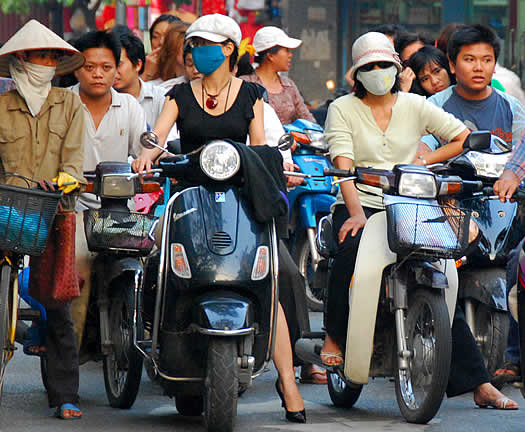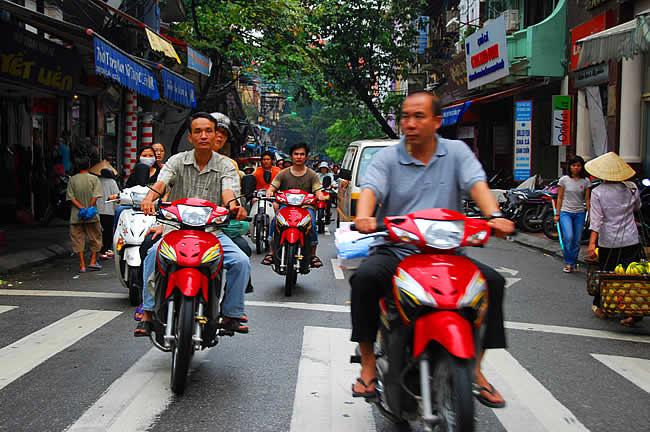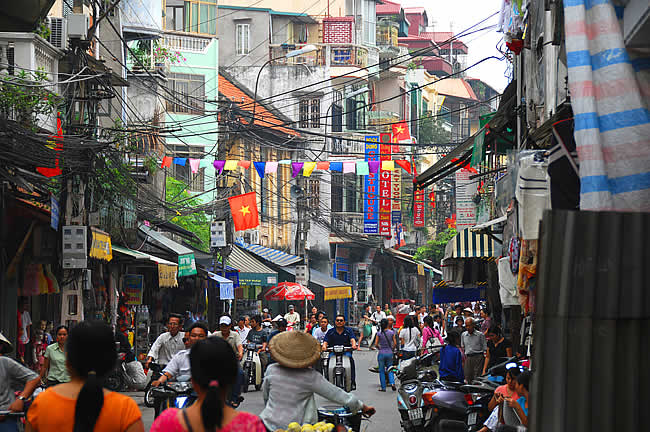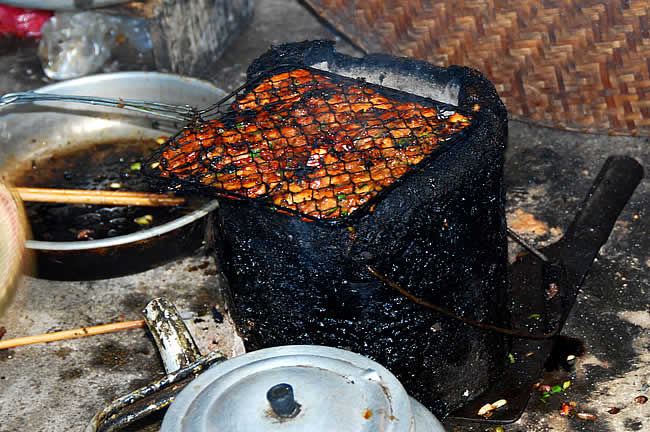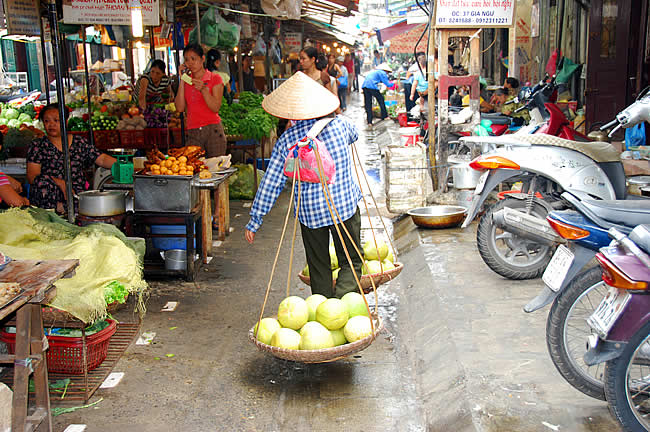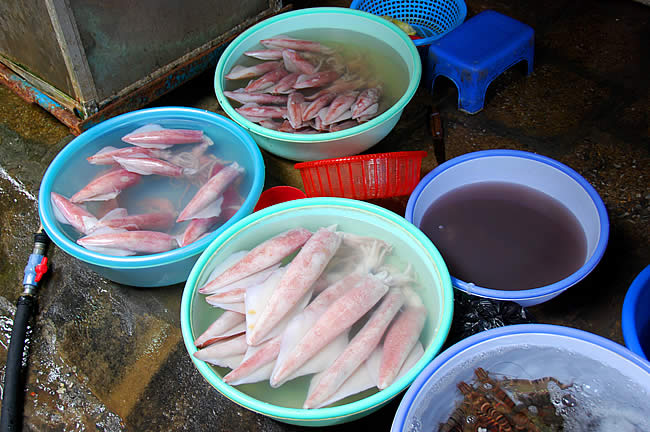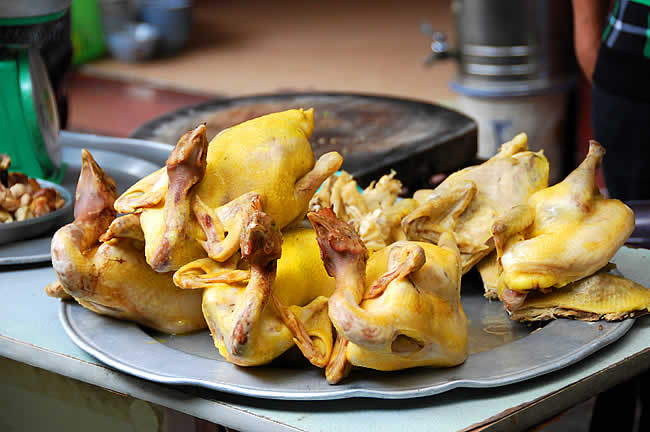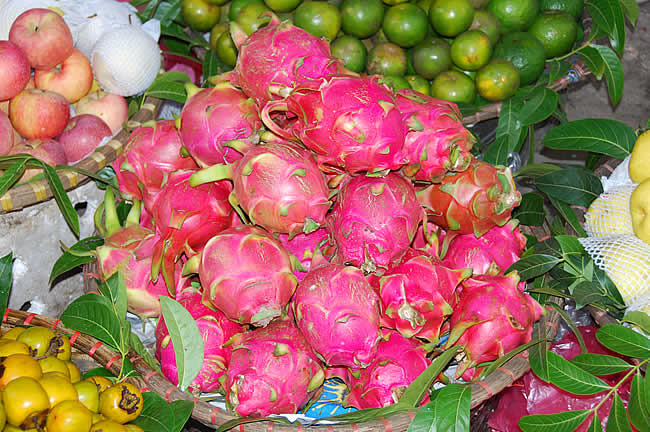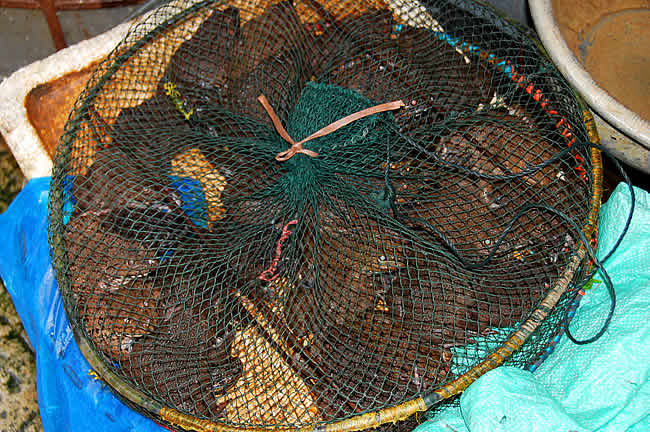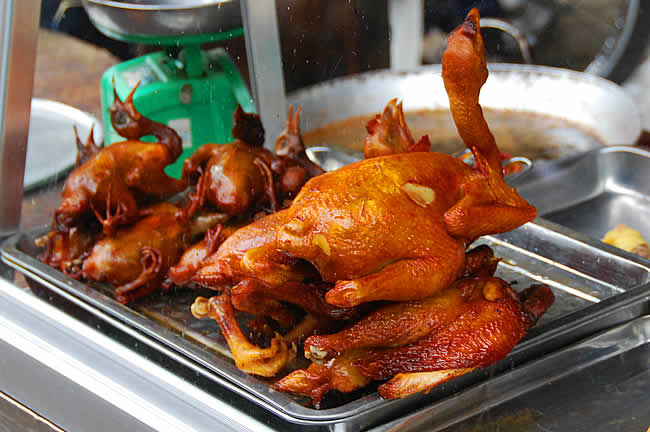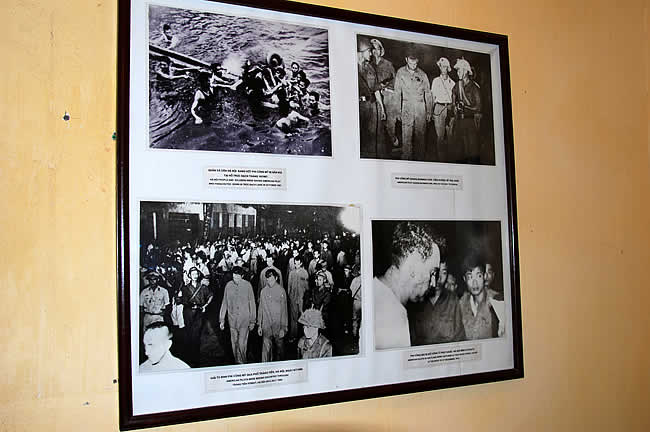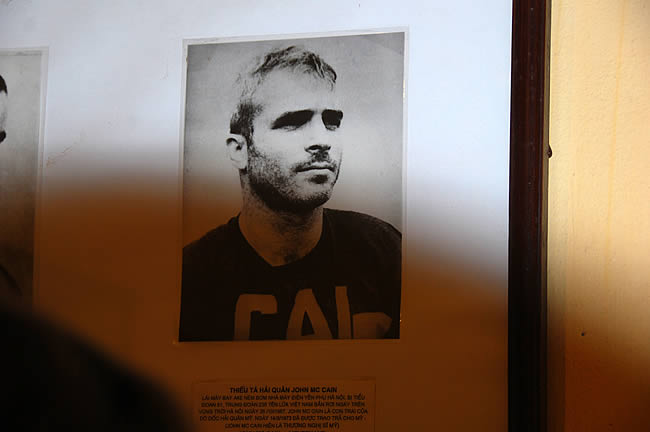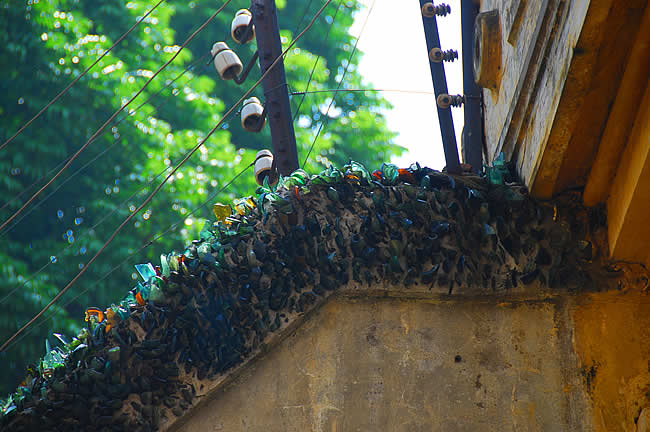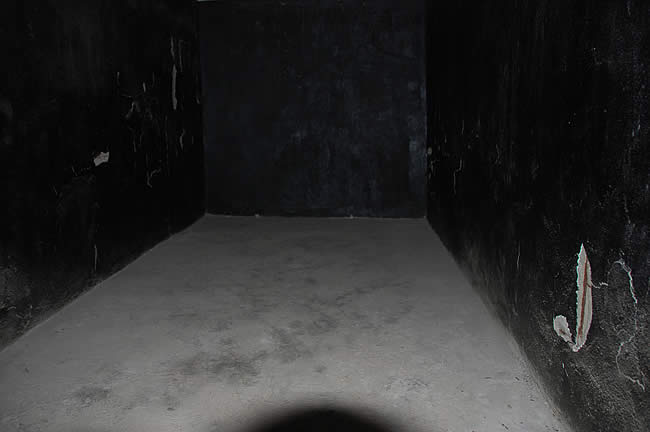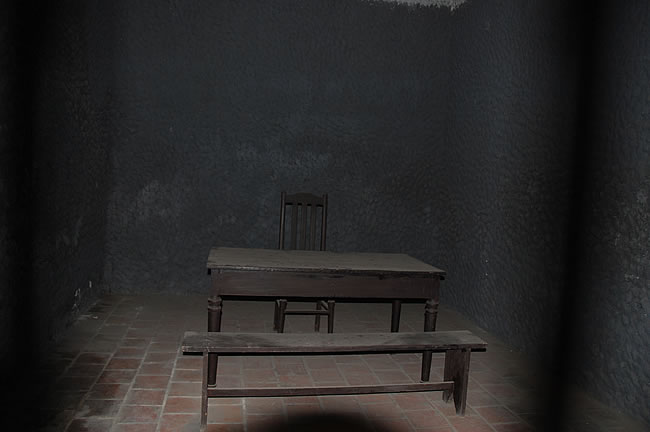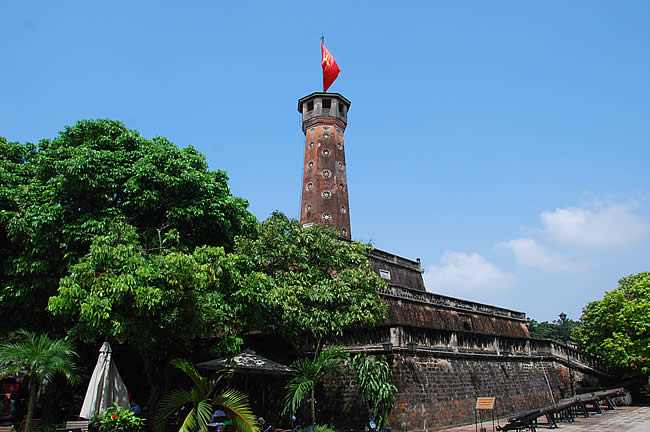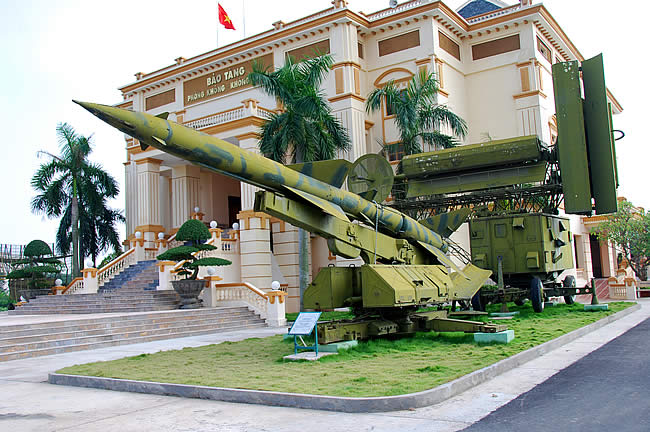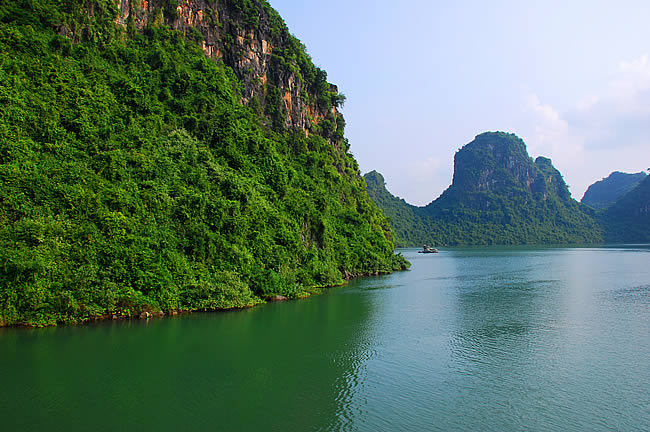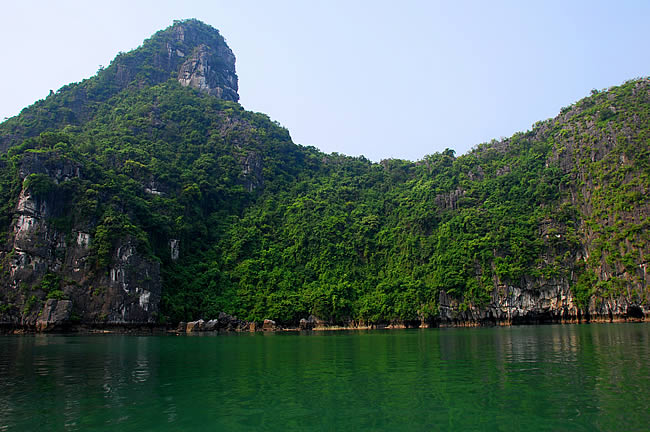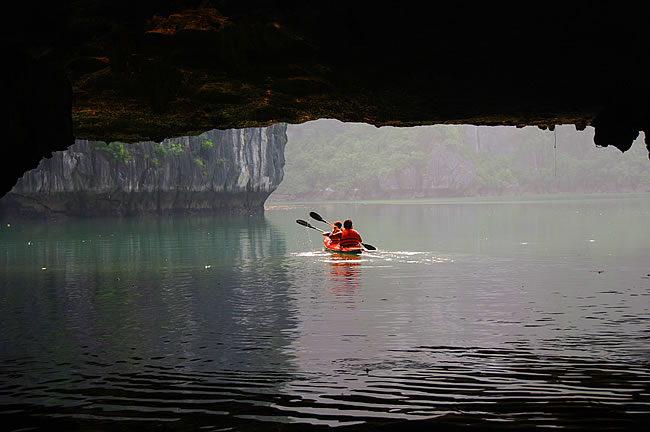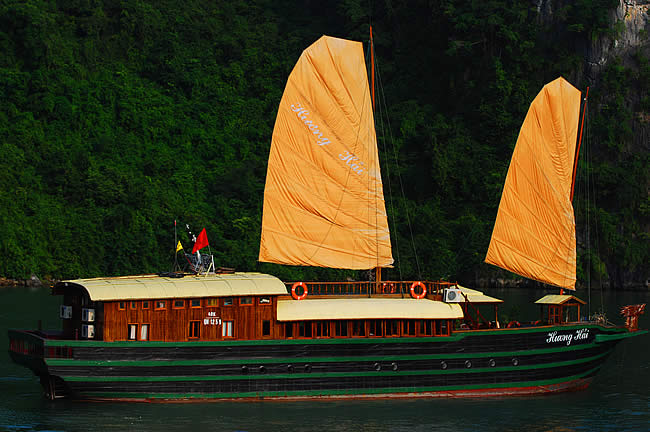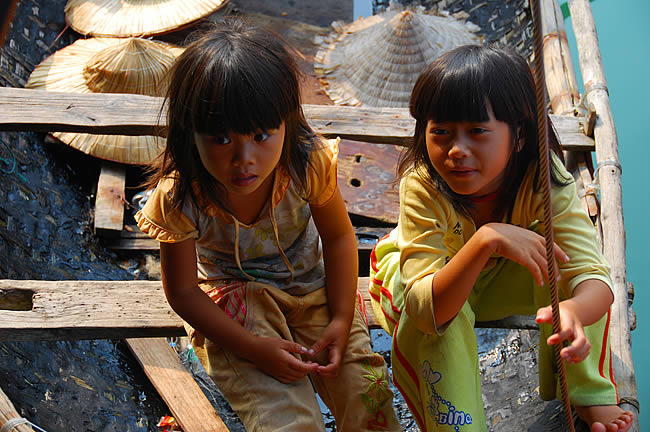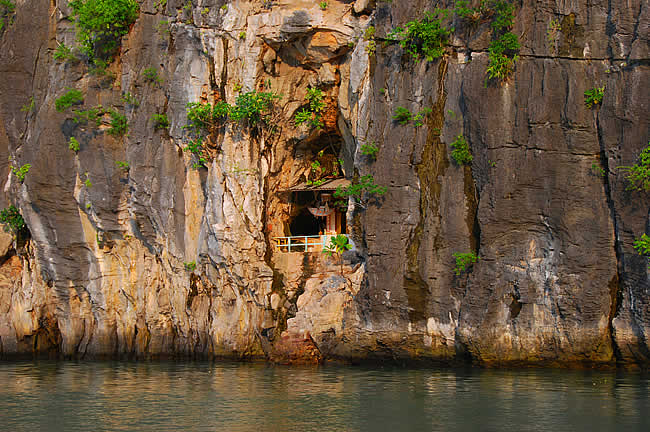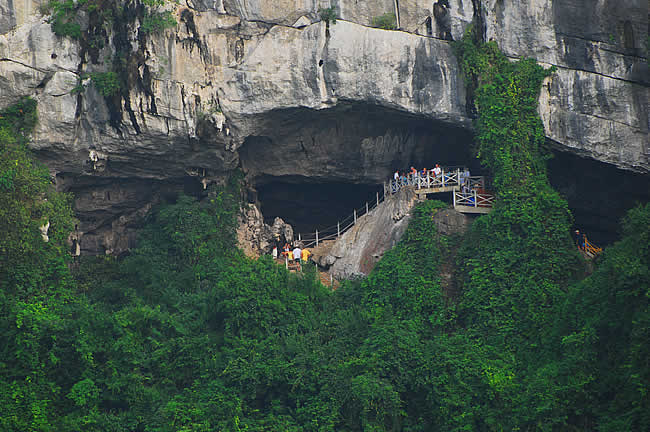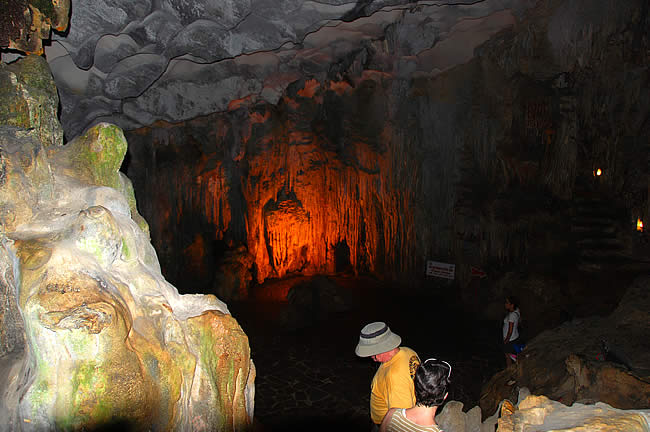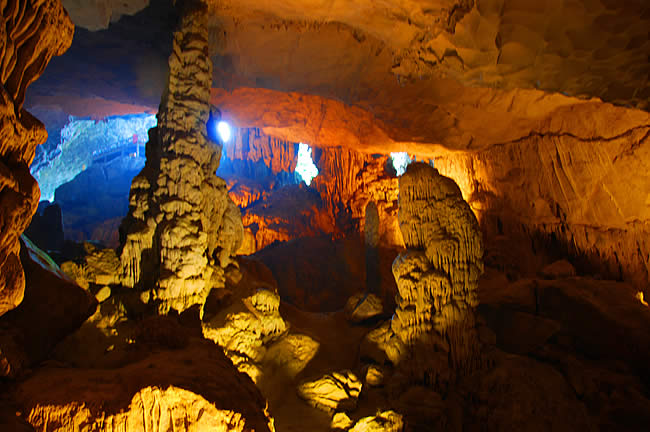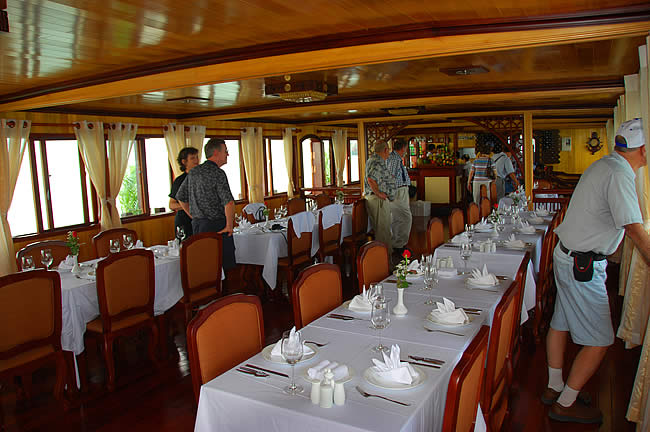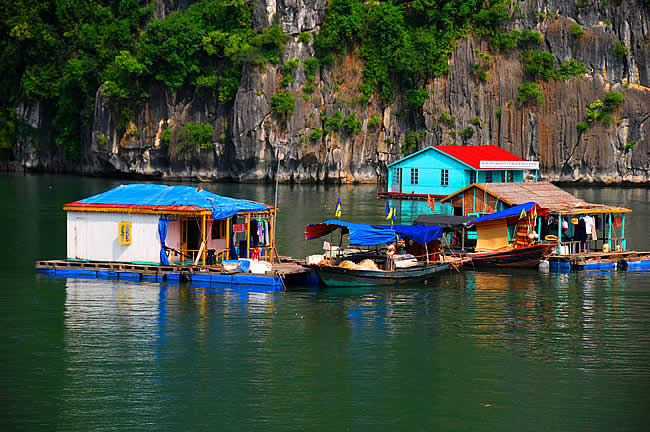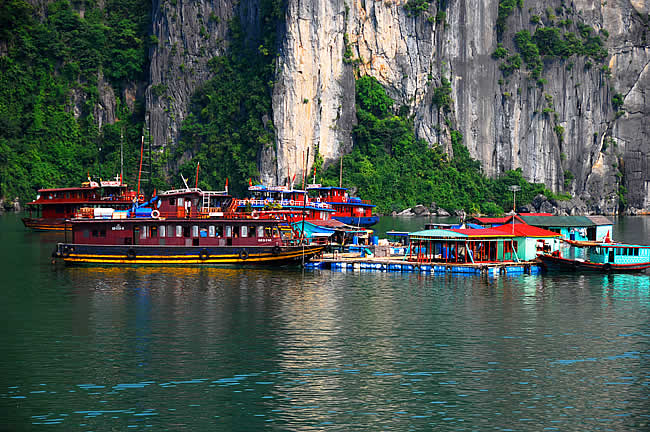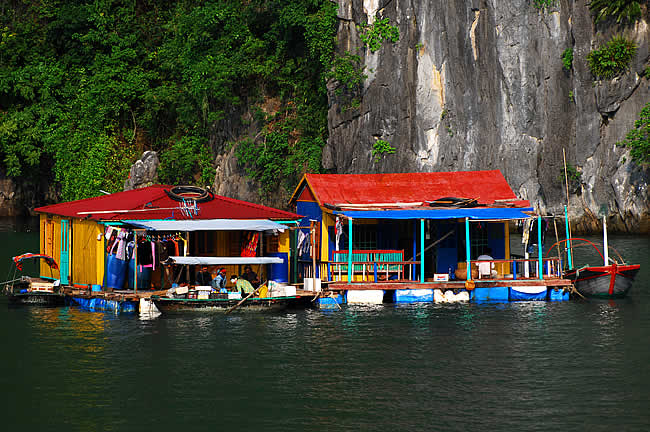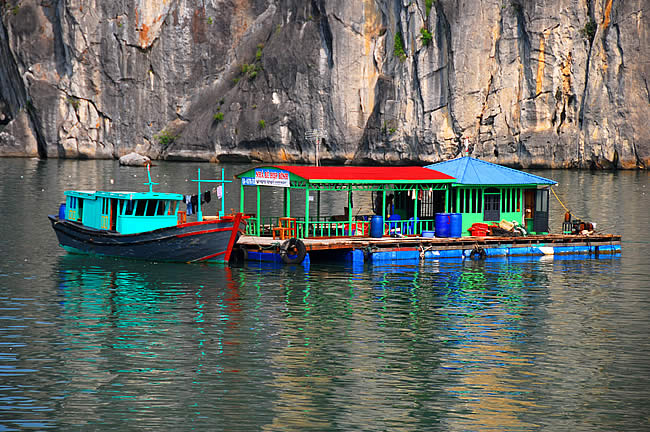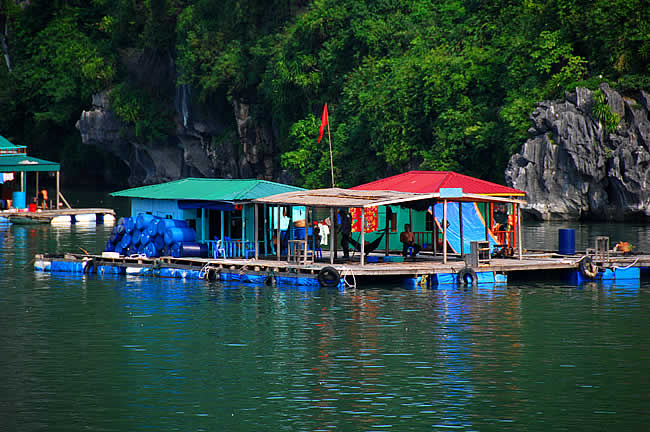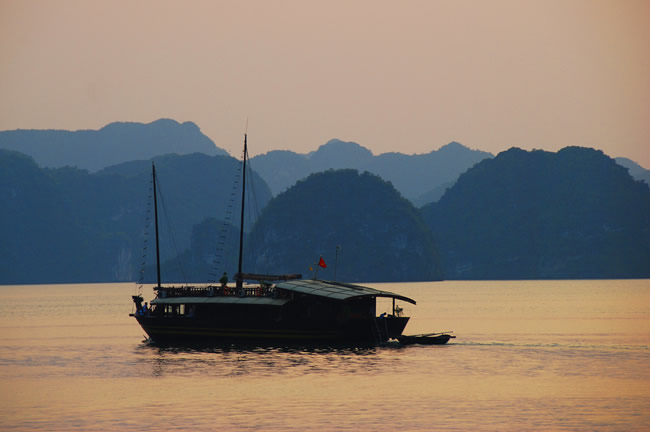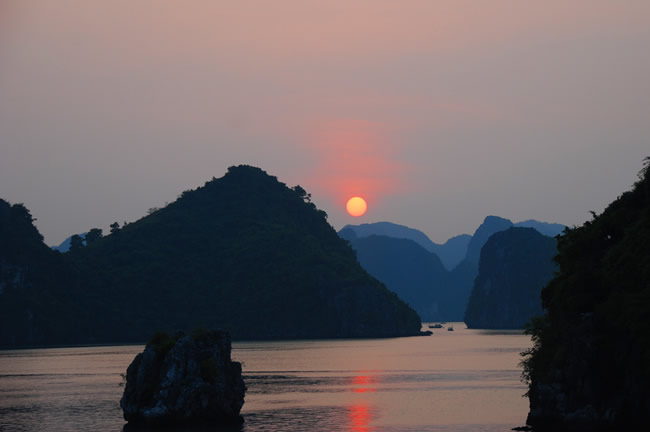Return to Vietnam, Part 1: Halong Bay and Hanoi Hilton
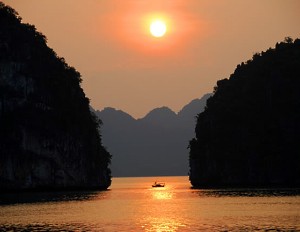
Tonight, I took a long, peaceful swim in Halong Bay, Vietnam.
I dove off the back of our wooden junk just after sunset, and as the sea turned from green to black, I watched the soft lights from distant boats shimmering on the glassy surface.
We're several miles off the coast, anchored for the night and surrounded on all sides by islands that soar dramatically into the sky. The water is salty so close to the South China Sea, and the temperature is ideal for swimming, a welcome respite from the heat and humidity of this part of the world.
Legend has it that there's a monstrous sea serpent called Tarasque in these waters. Fortunately, I was not swallowed, and even the garden-variety sea snakes kept their distance.
I arrived in Vietnam three days ago in a party of 32 Americans -- 11 former prisoners of war and their families. All the POWs were pilots who spent years in captivity in the service of their country.
I was a child during the Vietnam War, and I can barely remember the day my uncle's plane was shot down near Hanoi. But as the years passed, I can recall wondering where he was and how he was, and whether he was still alive.
I could never have dreamed then that tonight I'd be floating in the Gulf of Tonkin beside a boat holding my uncle and his family, and other former POWs and their families, on a pilgrimage to the darkest places and times of their lives.
I won't attempt to relate what these POWs went through, or why they wanted to return. Each man has powerful stories, but they are not mine to tell.
Instead, I'll talk about what I've seen for myself, and what you might see if you visit Vietnam, now an up-and-coming destination for adventurous travelers.
This country has thrown open its doors to Western tourists, particularly Americans. I'll provide a complete list of cruises and tours that visit Vietnam, at the end of the letter.
Is this country ready for company? Read on.
We arrived in Hanoi on a flight from Hong Kong, descending through the clouds and rain of Typhoon Lekima, which was pounding the coast farther south. As we walked off the spanking new Vietnam Airlines jet and gathered in a special holding area to wait for our visas, the mood was upbeat.
Prices are extraordinarily low here, and at 16,080 Vietnamese dong to the US dollar, it takes a bit of math to figure them out. I cashed $300 and felt like a high roller with nearly 5 million dong.
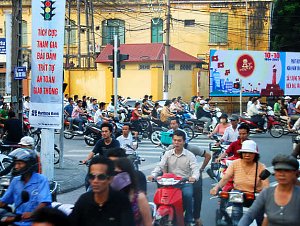
We took buses to our hotel in the Old Town section of Hanoi, where the streets were filled with scooters and a continuous cacophony of beep-beep-beep. With few exceptions, the buildings were old and many were run down, but life spilled out of every doorway.
There are hundreds of narrow, one-room stores lining the streets in this area, selling silk products, art, souvenirs, etc. People sit in tiny plastic chairs or squat in front of their shops, and there are always parked scooters nearby. There is an endless parade of street merchants hawking fruit, hats, loaves of bread and trinkets.
We stayed at the Hong Ngoc Hotel, an old but clean eight-story structure with an attentive staff, wireless Internet and small restaurant.
After dropping off our bags, we went out in the drizzling rain to see the town, quickly discovering that one cannot wait for the flow of scooters to stop before crossing the street, because it never stops. The trick is to step purposefully into the middle of it, try to establish eye contact with anyone who is about to run you down and hope they manage to avoid you. They will.
There are enough Western tourists in Hanoi now that we did not attract a great deal of attention, despite the fact that the average American is several inches taller than the average Vietnamese.
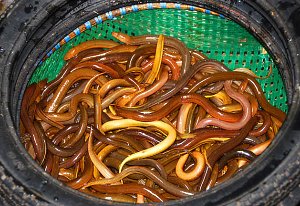
We visited an open-air market that sells all things edible, or arguably so, including live eels and squid, large earthworms and frogs, cooked poultry of all types (complete with head), and several unidentified treats.
After a decent dinner and a better night's sleep, we set out for the notorious Hoa Lo prison, built by the French when they occupied the country, and later pushed into service for the interrogation and incarceration of American POWs.
Hoa Lo (loose translation: fiery furnace) was the first stop for most downed pilots during the war, the best known of all the prison camps, the one that came to be sarcastically called the "Hanoi Hilton."
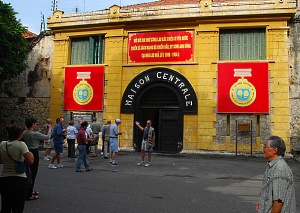
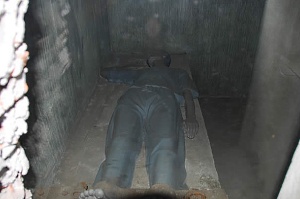
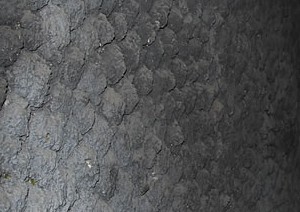
Today Hoa Lo is a museum dedicated to reminding people of the cruelty of the French, but it also contains pictures and artifacts and propaganda from what the Vietnamese call the American War.
Due to its central location, some sections of the prison were demolished to make room for a high-rise building, but much of the original complex is still standing and in good condition.
Every pilot in our group had spent time at Hoa Lo, some arriving with serious injuries from their shootdown or capture. I can't imagine what they were feeling when they walked back in, but it was deeply moving for the rest of us.
Inside the grey walls, there are claustrophobic cells that were used for solitary confinement, just wide enough and long enough for a single man to lie down, still containing the ankle shackles that must have made sleep nearly impossible.
There is no plumbing in the cells and some are without windows, on a hallway so dark you can not see the wall at the far end.
Off a small courtyard, there is the "knobby walled room," so named by the POWs for the little mounds of cement slapped on the walls in a crude attempt at soundproofing. It was there that much of the interrogation and torture took place, and the room has been left essentially unchanged since the war ended.
One relic from when the French ran the country and the prison -- a guillotine, and a list of Vietnamese who were beheaded on the spot.
During our time at Hoa Lo, there was a man from the Vietnamese government nearby, filming our pilots, though I never heard why. We moved freely through the prison and at least one of the pilots was able to enter his old cell.
We bumped into a Tauck tour group whose participants were understandably incredulous to find American POWs in-house and willing to share a few minutes of their time.
From Hoa Lo, we went to the Army Museum, a collection of planes, artillery and artifacts from the American War and the French War, including the largest exhibit, a huge pile of rubble created from downed American aircraft. Then it was on to the Air Force Museum, with its Russian MiGs, SA-2 anti-aircraft system and more debris from U.S. planes.
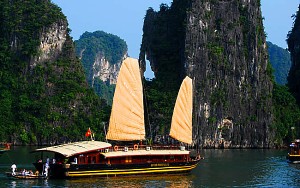

After an emotional day and another night at the Hong Ngoc, we left Hanoi for the three-hour drive to the coast and Halong Bay, where new, luxury hotels are sprouting by the water. We boarded an immaculate wooden ship called Victory, our overnight home, and sailed into the bay.
Halong Bay is a magical place, with more than 2,000 limestone islands jutting abruptly out of emerald-green water, and floating villages inhabited by families of pearl farmers and fishermen. Some of the islands contain vast caves, one of which we explored before our evening meal on board ship, the best of the trip.
Halong Bay is being developed by the Vietnamese government to attract tourists from around the world. If Hoa Lo is Vietnam's past, perhaps this ancient waterway is its future.
Tomorrow we'll leave this tourist area for the countryside, en route to remote and mountainous jungle near the Chinese border. We'll be looking for a prison where the sun never rose, one the POWs called Dogpatch. I'll check in from there.
Sincerely,
Alan Fox
Executive Chairman
Vacations To Go
Related newsletters:
Return to Vietnam, Part 2: Way Off the Beaten Path
Return to Vietnam, Part 3: Our Search for Dogpatch

